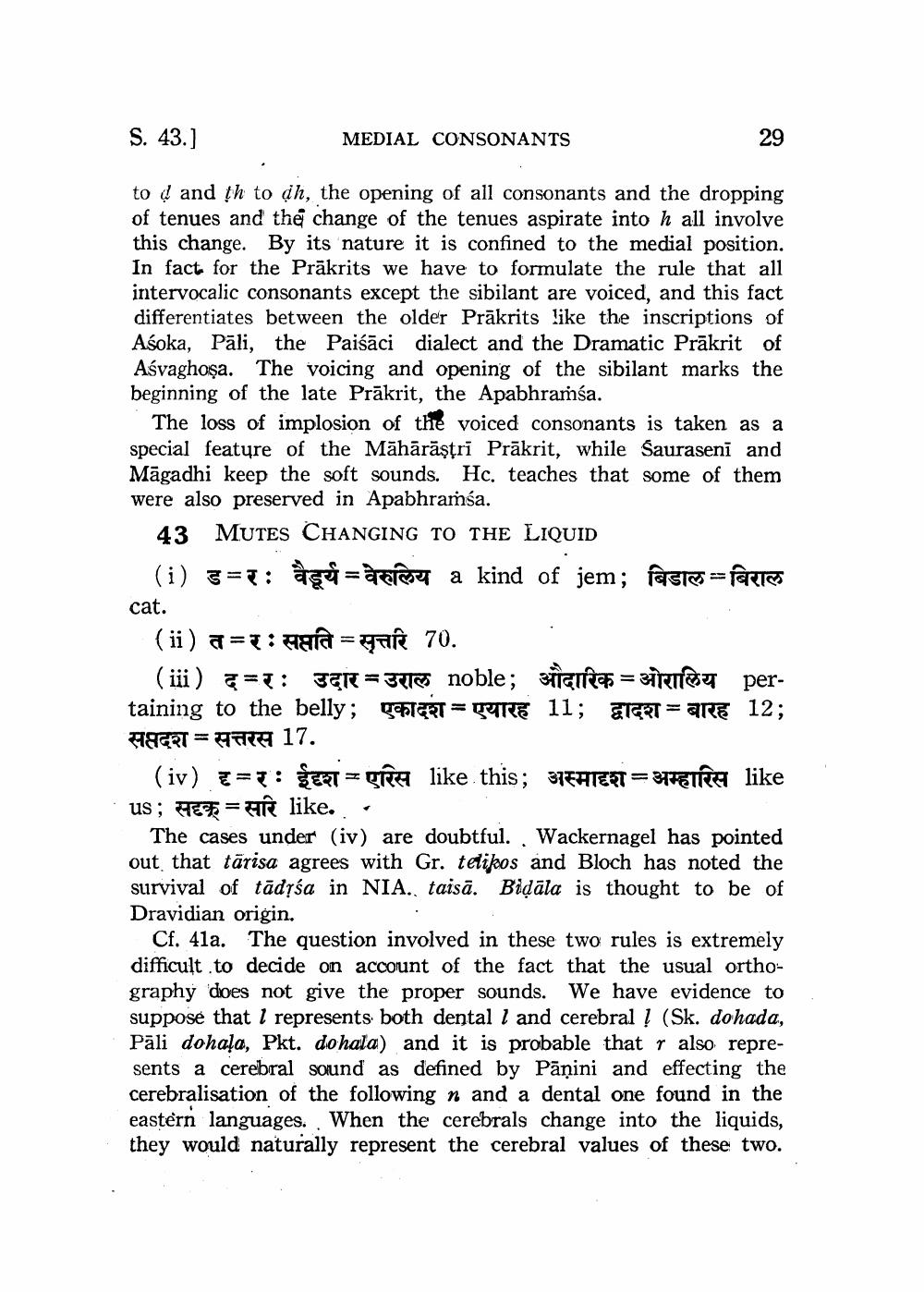________________
S. 43.]
MEDIAL CONSONANTS
29
to d and th to dh, the opening of all consonants and the dropping of tenues and the change of the tenues aspirate into h all involve this change. By its nature it is confined to the medial position. In fact for the Prākrits we have to formulate the rule that all intervocalic consonants except the sibilant are voiced, and this fact differentiates between the older Prākrits like the inscriptions of Asoka, Pāli, the Paisāci dialect and the Dramatic Prākrit of Ašvaghosa. The voicing and opening of the sibilant marks the beginning of the late Prākrit, the Apabhraíba.
The loss of implosion of the voiced consonants is taken as a special feature of the Māhārāştri Prākrit, while Saurasenī and Māgadhi keep the soft sounds. Hc. teaches that some of them were also preserved in Apabhraíśa.
43 MUTES CHANGING TO THE LIQUID
(i) 3=T: au ratarse a kind of jem; fastes=farie cat.
(ii) a=:na= YA 70.
(iii) q=1: JER=3u noble; stiglie = siruese pertaining to the belly; gabeet = TARE 11; ETGRT = are 12; FARGET = FRA 17.
(iv) 7=I: SERT = gre like this; IEHTEST= FIRE like us; HEF = FR like.
The cases under (iv) are doubtful., Wackernagel has pointed out that tārisa agrees with Gr. telikos and Bloch has noted the survival of tādría in NIA. taisā. Bidāla is thought to be of Dravidian origin.
Cf. 41a. The question involved in these two rules is extremely difficult to decide on account of the fact that the usual orthography does not give the proper sounds. We have evidence to suppose that I represents both dental 1 and cerebral Į (Sk. dohada, Pāli dohaļa, Pkt. dohala) and it is probable that r also represents a cerebral sound as defined by Pāṇini and effecting the cerebralisation of the following n and a dental one found in the eastern languages. When the cerebrals change into the liquids, they would naturally represent the cerebral values of these two.




